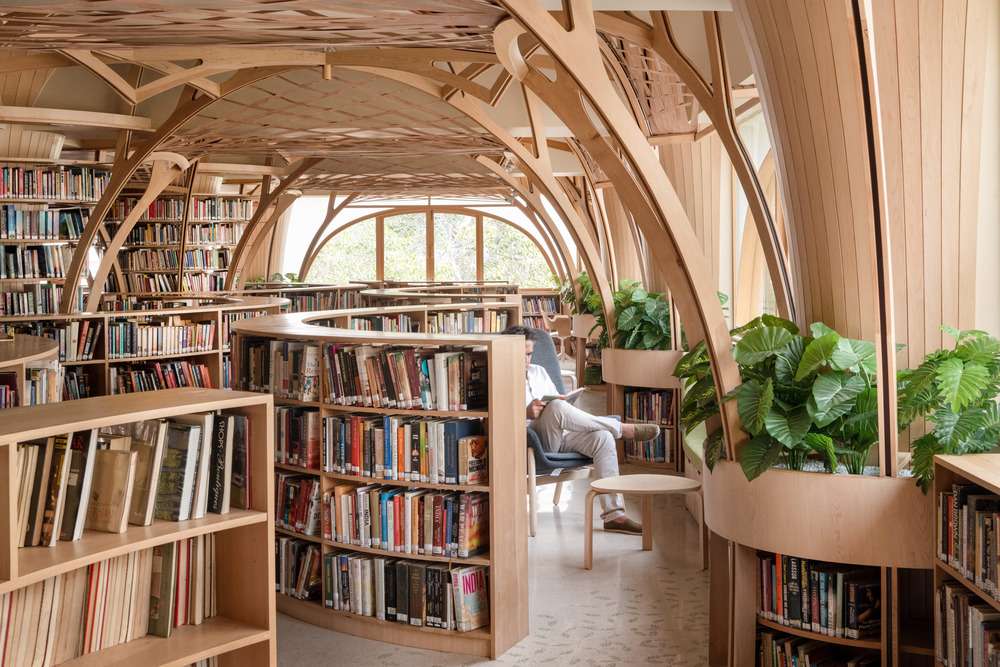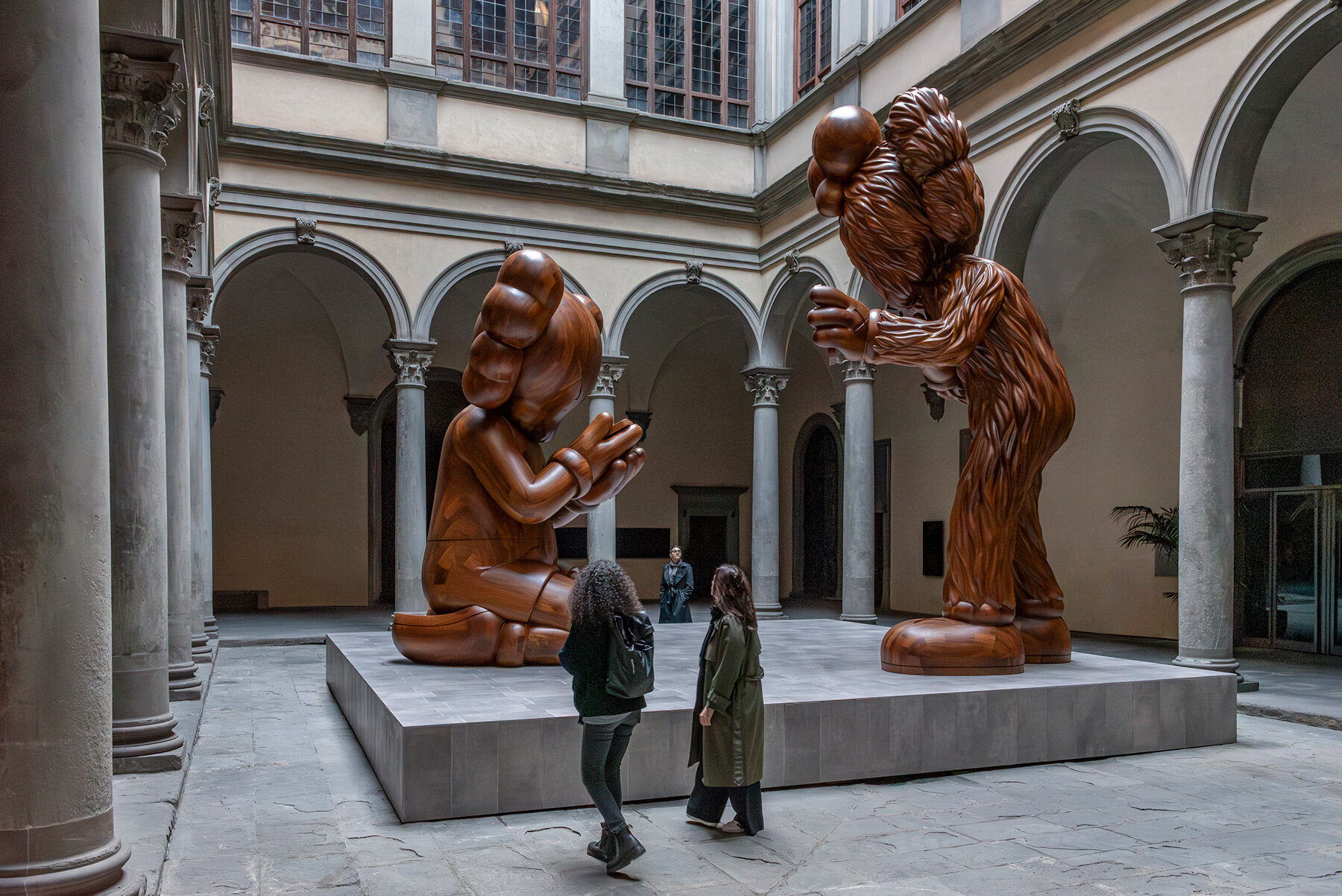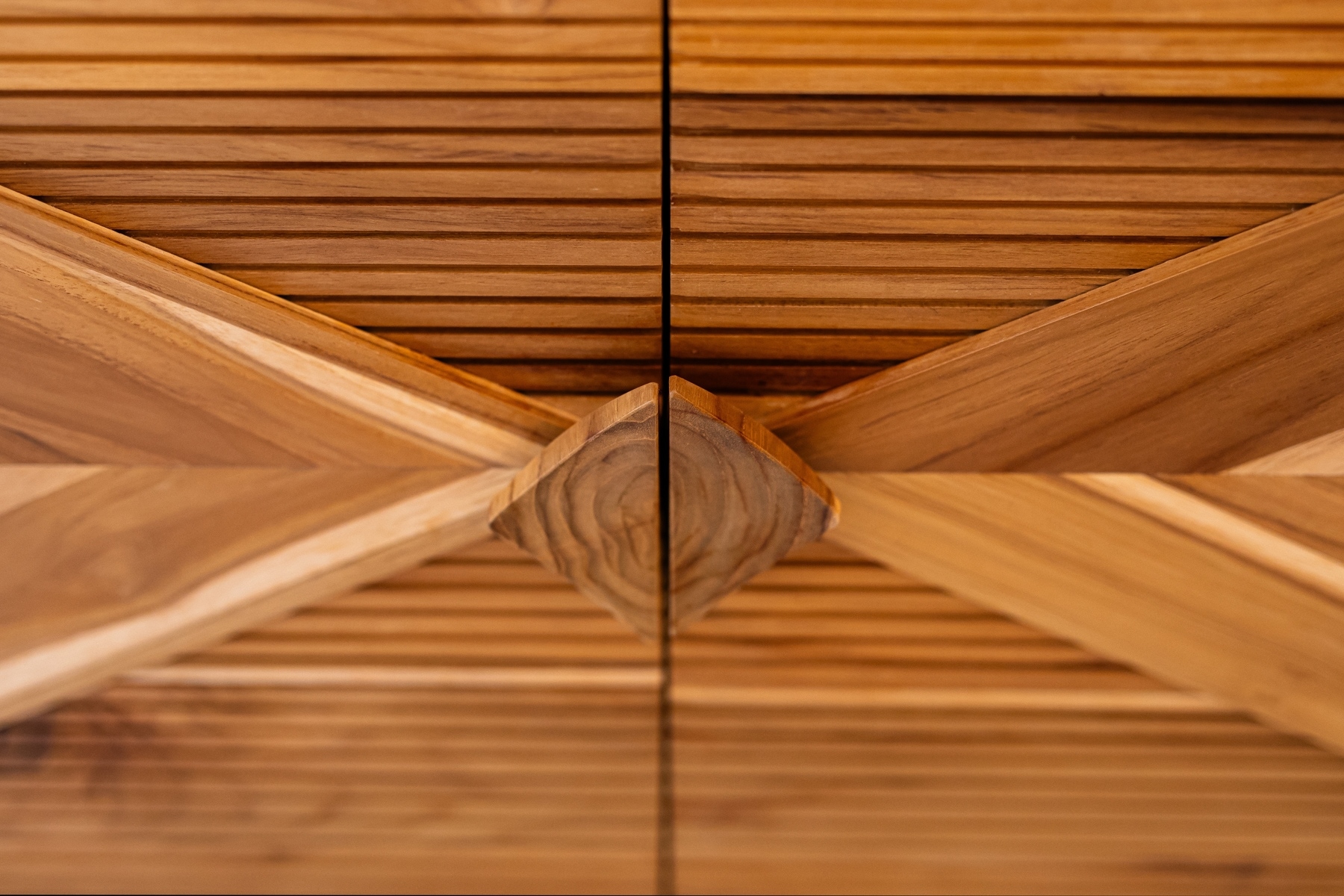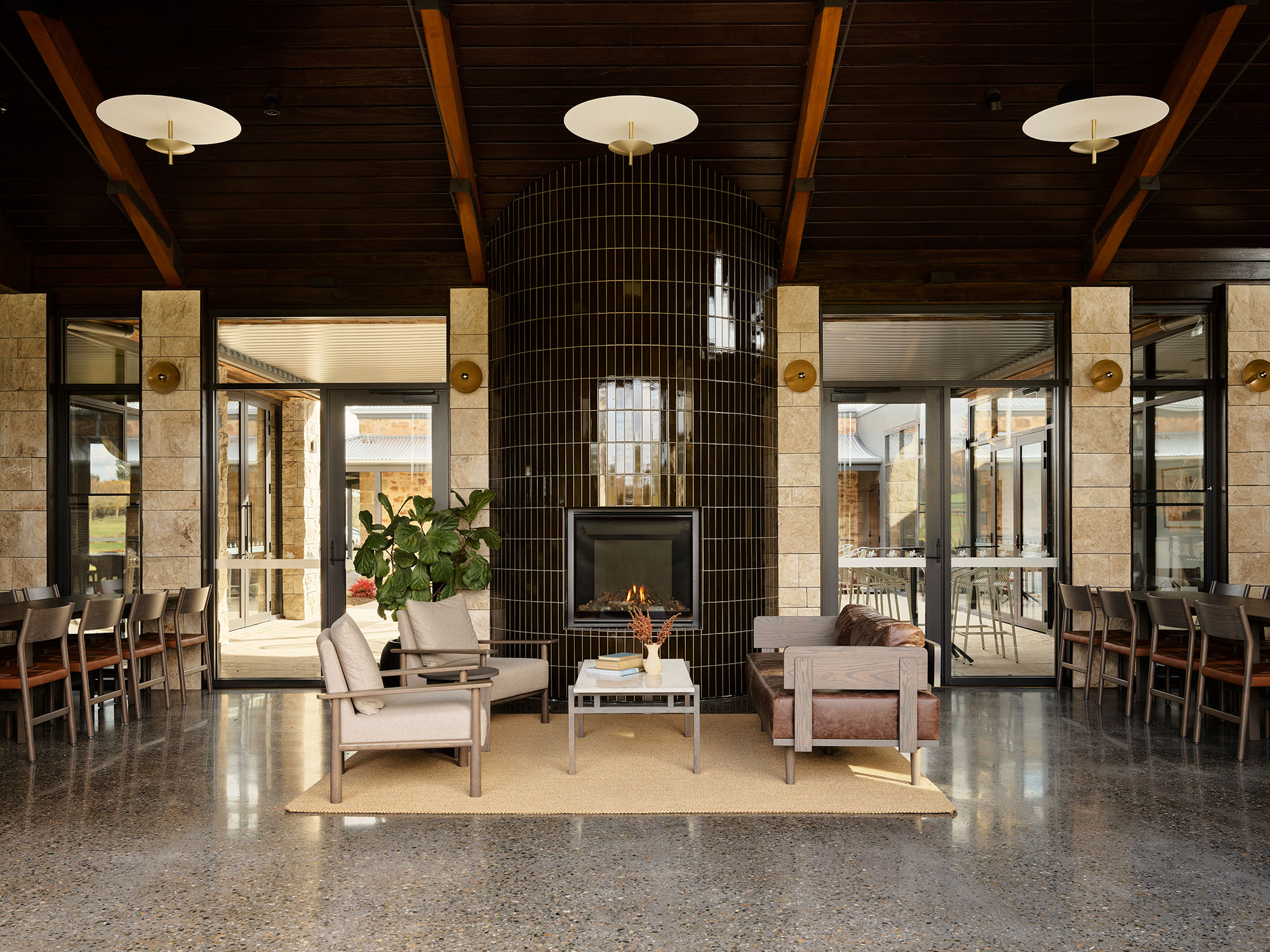When presented with the challenge of turning an old and not-so-popular library space at the Cricket Club of India into a social hub for locals to gather and want to spend their time, Studio HINGE had to make sure that the renovation will be as sustainable and environmentally conscious as possible. The name of the project Forest of Knowledge is a node to the decision to use nature as an inspiration when creating a contemporary and inclusive library. Instead of a dark and boring room full of tall bookshelves, this library is now full of light, natural wood, plants, and space.
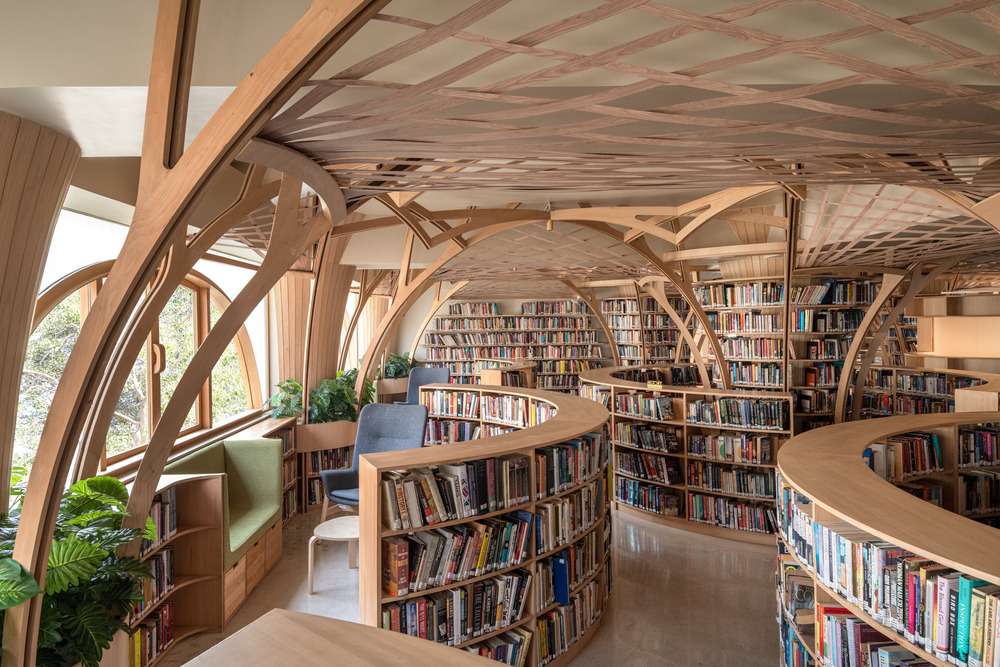
To create a library that would become a desirable place for readers to gather and spend time, the design team had to research what would make a library attractive in the times when the digital world is always at our fingertips. The answer was clear—it is the sense of community that people yearn for. So why not create a space where you can come not just to pick up a book and begone, but the one where you are invited to stay, explore more books, and sit next to the concrete columns resembling trees, and plants reminding the beautiful tree canopy from the outside?

Indeed, the space reminds you of an indoor garden, whereas the flowers are replaced by books, with knowledge being the focal point of the interior design. The plan of the library plays around with geometry, where different sizes and forms of the bookshelves are intertwined, together creating a resemblance of the labyrinth. Circular bookshelves next to bookshelves along walls not taller than 1.2 m allow the natural light in, thanks to the enlarged during the renovation windows.
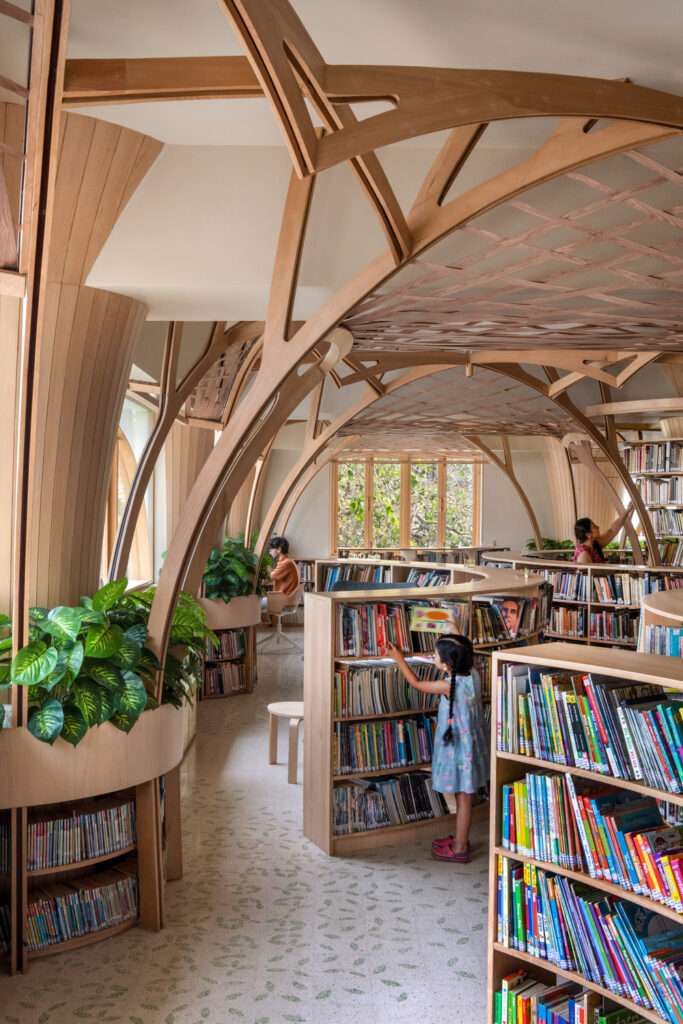
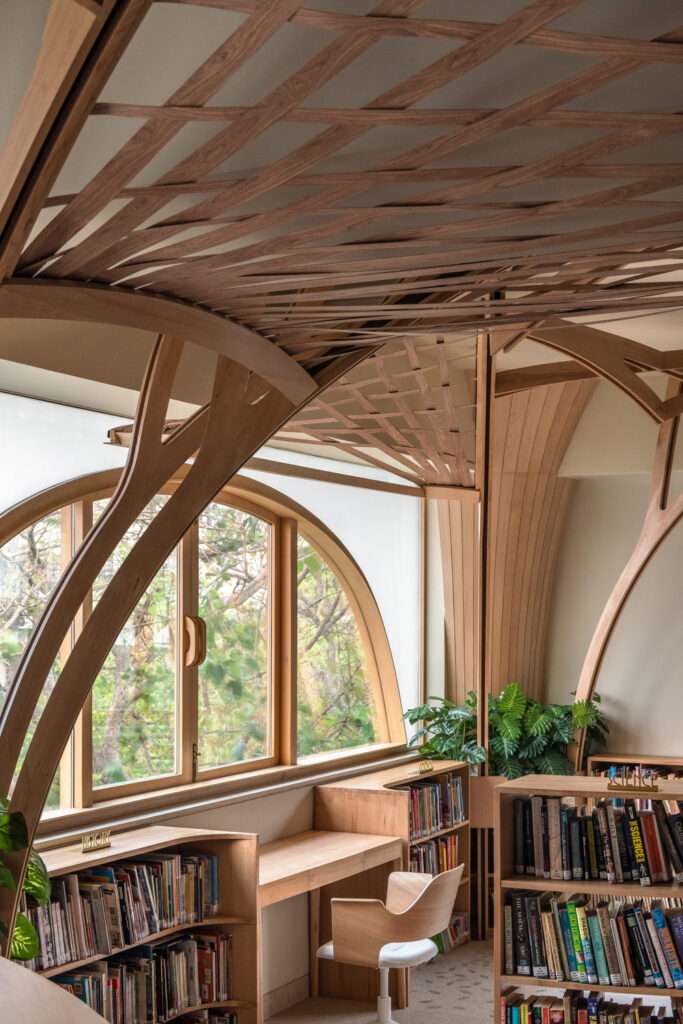
Windows made of yellow cedar and furniture made of western hemlock are additional elements in the interior creating a feeling of walking under trees. However, it is the 16 mm thick timber branches that intertwined overhead that further emphasize the ambiance. As sustainably harvested timber is hard to find in India, instead Canadian FSC source was used. Finally, the custom terrazzo flooring tiles, accented with marble and green glass, form abstract patterns resembling scattered leaves.
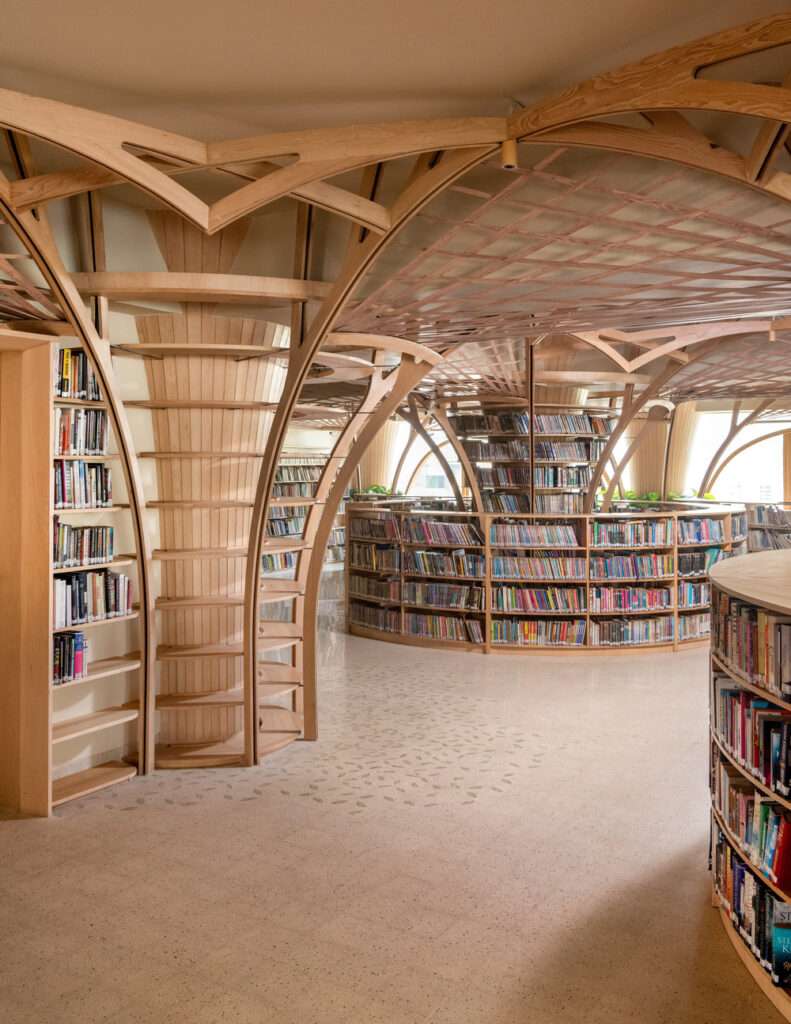
As the Cricket Club of India’s library is a historical Art Deco building built in 1938—from Bombay’s colonial past—it is also an example of how design cannot only give a new look to a place with a rich history but make it functional and more active. According to surveys, after renovation, the library has seen a significant rise in number of visitors. Readers of all ages come here to relax and lose themselves in a book, opening a whole new world tucked in a corner, or lying on a comfortable sofa at this library. Luckily, the library at the Cricket Club of India provides the space for the community, transcending beyond its traditional role.
